NYC_제프 셔 Jeff Scher
NYC_제프 셔 Jeff Scher
1976 / Color / Sound / 2min / 16mm to HD
Description
<NYC>는 바드 칼리지 졸업 작품으로, 16mm 볼렉스 카메라와 앙제뉴 줌 렌즈로 맨해튼을 도는 긴 겨울 산책로에서 촬영했다. 내가 마치 도시와 함께 하는 것 처럼 영화 카메라의 가능성에 푹 빠져 있었다. 밤엔 정신이 온전한 사람이 외출하기에 힘들 만큼 너무 추운 겨울이었기 때문에 난 종종 홀로 큰 길가로 나섰다. 얼음으로 뒤 덮인 여러 날을 혼자서 서성였다. 난 거대한 돌, 강철, 20세기 성당의 유리 사이를 방랑하는 것 처럼 느껴졌다.
난 어떻게 건축이 얼어붙은 음악과 닮아 있는지 괴테가 한 말과 영화의 본질은 리듬이라는 한스 리히터의 선언에 대해 생각했다. 이런 생각들이 더 해지면서 난 영화 카메라로 건축에 갇힌 음악을 “해동”할 수 있었다. 라이브 액션(카메라가 재생되는 속도와 같은 속도로 기록)과 애니메이션의 차이점은 라이브 액션은 시간을 기록하는 반면 애니메이션은 한 번에 한 조각씩 구축한다는 점이다.
기계적으로 많은 것을 할 수 있는 볼렉스로 촬영해 나는 스틸 사진과 같은 효과를 낼 수 있는 장시간 노출이나 극적으로 짧은 줌, 빛 줄기 효과를 카메라 줌을 통해 한 번에 하나의 프레임에 움직임 없이 라이브 액션과 다르지 않는 결과를 만들어 내는 걸 탐색했다.
이 영화는 코닥 엑타크롬 리버설 필름으로 촬영했는데, 상업용 촬영에서 쓰고 남은 저렴한 필름을 구입해 사용했기 때문에 길이가 짧았다. 어떤 필름은 심각할 정도로 오래되어 색을 제대로 재현할 수 없었다. 어떤 장면은 너무 색이 창백하게 나와 잉크와 물감을 손으로 칠하기도 했다. 처음 촬영 분량은 30분 정도였고, 작업을 하면서 계속해서 짧게 편집해 역동적 느낌이 나게끔 했다. 영화는 결국 3분 정도로 압축되었다.
영화의 음악은 바드의 음악 전공학생인 켄 니콜라스가 작곡하고 지휘했다. 켄은 영화에 사용한 교회 오르간을 연주하기도 했다. 음악은 고딕적인 느낌이 있는데(바드 채플에서 녹음했다) 이 덕분에 건물의 규모와 장엄함에 대한 경외심을 영화속에 포착하는데 도움이 되었다.
영화를 만들고 몇년 후에 필름의 오리지널 마스터가 보관되어 있던 현상소는 폐업했다. 놀랍게도 현상소의 모든 것들이 쓰레기통에 버려지고 원래 인화한 마스터 필름을 분실했다. 새로운 네거티브를 만들기 위해서 내가 가지고 있는 상영용 프린트를 사용할 수 밖에 없었는데 가지고 있는 것은 모두 색이 변하고 영사 중에 훼손된 것 뿐이었다. 난 프린트를 네거티브에 인화해 문제가 있는 색을 반전시켜 오렌지와 황금빛이 돌게 했다. 난 이 과정에서 모든 밤과 낮의 하늘이 뒤 바뀌는 것이 좋았다. 몇년 후에 뉴욕타임즈에 있는 내 블로그를 위해 새로운 사운드트랙을 재편집했다. 이렇게 해서 이 영화는 3가지 버전이 나오게 되었다. 지금 소개되는 버전은 디지털 색 보정의 기적으로 복원된 오리지널 버전(네거티브는 분실된)이다.
NYC was my thesis film at Bard College. It was shot on long winter walks around Manhattan with a 16mm Bolex camera and an Angenieux zoom lens. I was as infatuated with the possibilities of the movie camera as I was with the city. It was a cold winter and at night I was often alone on major avenues because it was just too freezing for anyone sane to be out. On many icy nights I had the city to myself; it felt like I was wandering through some gigantic stone, steel, and glass 20th century cathedral.
I was thinking about Goethe’s comment about how architecture resem- bled frozen music, and Hans Richter’s proclamation that the essence of cinema was rhythm. These ideas merged; I could use the movie camera to “defrost” the music locked in architecture. I shot single frame, ani- mation style. The difference between live action (recording at the same speed as playback) and animation is that live action records time, while animation constructs it one sliver at a time.
Shooting in this manner with the mechanically versatile Bolex allowed me to explore still photography trick shots like using the long exposure mode, zooming to make streaming light effects and making dramatically short zooms, one frame at a time without the motion blur that would have occurred doing the equivalent in live action.
The film was shot with Kodak Ektachrome reversal, most of it purchased on the cheap as short ends which are odd lengths of leftover film stock from commercial shoots. Some stock was severely out of date and already having fading issues. Some shots were so pale in color that I hand-tinted them with ink and watercolor. The film ran about a half hour in its first cut. I kept cutting it tighter and tighter as I worked on the film, trimming everything down to its dynamic essence. The film was distilled down to about three minutes.
The music was composed and conducted by Ken Nichols, a music student at Bard. Ken also played the church organ heard on the track. There is a gothic feel to the music (it was recorded in the Bard Chapel) that helps capture the film’s sense of awe at the scale of the buildings and the reverence for their majesty.
Several years after making the film, the lab where the original film mas- ter was stored went out of business. To my horror everything in the lab was tossed into a dumpster, so the original printing master was lost. In order to make new prints I had to work from existing prints, which were also fading and projection-weary. I made a second version of the film by printing it in negative, which hid the pinkish, faded colors by inverting them and making them orange and golden. I liked how all the day sky turned to night and how the night sky turned iridescent. Years later I re- cut the film to a new soundtrack for my blog in the New York Times. This is how there came to be three versions of this film. The version presented here is the original version, with the colors restored via the miracle of digital color correction.

